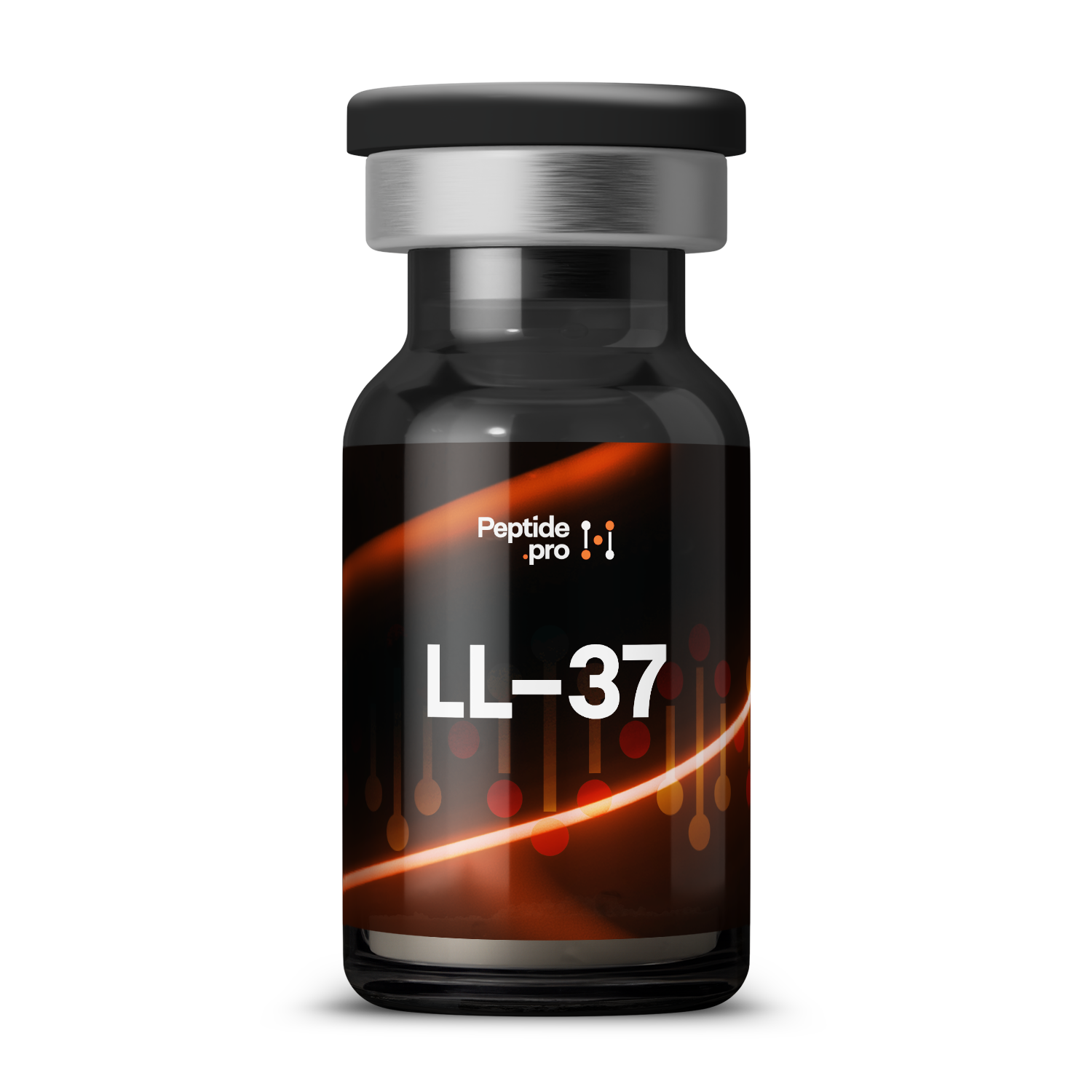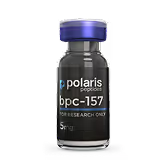LL-37
LL-37 is a natural 37–amino-acid peptide that acts like a bodyguard against infections and helps wounds heal. Applied in research or therapeutic settings, it kills bacteria by disrupting their membranes and supports tissue repair by recruiting immune cells and promoting new blood-vessel growth.
Compound Overview
About the product
The peptide sequence carries a net positive charge that facilitates binding to microbial membranes. It contains only natural L-amino acids and no chemical modifications. LL-37 is synthesized by Fmoc solid-phase peptide methods and purified by preparative HPLC to ≥95 percent purity. Mass spectrometry confirms correct sequence and molecular weight.
LL-37 disrupts bacterial and fungal cell membranes by inserting into their lipid bilayers, leading to pathogen death. It also modulates host immunity by neutralizing endotoxins and recruiting immune cells via chemotactic signaling. Additionally, LL-37 promotes angiogenesis and re-epithelialization (skin cell migration) in wound beds. These combined actions support both antimicrobial defense and tissue repair.
The peptide has been evaluated primarily for infection control and enhancement of wound healing. In small human trials, topical LL-37 accelerated closure of chronic leg and diabetic foot ulcers compared with placebo. Patients treated with LL-37 showed reduced local bacterial load and improved skin-barrier restoration. Further studies are assessing its use in surgical-site infections and inhalation for respiratory infections.
In clinical studies, LL-37–treated sites reported mild, transient skin redness and itching at the application area. No systemic adverse events or laboratory abnormalities have been observed. Safety data for pregnancy, lactation, and long-term use beyond several weeks are not available. Recommended monitoring includes inspection for local irritation and routine vital-sign checks in research protocols.
LL-37 is produced by Fmoc solid-phase peptide synthesis on a resin support, coupling each amino acid stepwise. After cleavage, it is purified by preparative HPLC to research-grade purity. Quality control employs mass spectrometry and analytical HPLC to confirm sequence, purity, and identity. Manufacturing follows peptide-compounding standards under good laboratory practices.
LL-37 is classified for investigational research use only and is not approved by the U.S. FDA, EMA, or other major regulatory bodies for therapeutic application. It cannot be prescribed or sold clinically. Investigators obtain it under investigational-new-drug (IND) or equivalent frameworks. No over-the-counter or prescription formulations exist.
Human studies have applied LL-37 topically at concentrations of 0.5–1.0 mg/mL in hydrogel once daily to wound sites. Treatment durations in trials ranged from two to six weeks depending on wound size and type. No standardized dosing guidelines exist outside these research protocols. All administration should follow approved investigational designs.
- Do apply only to cleaned, debrided wound beds under sterile conditions.
- Do monitor wound healing progress and bacterial cultures regularly.
- Don’t use on unassessed or infected wounds without microbiological evaluation.
- Don’t combine with other topical antimicrobials off-protocol.
- Q: Does LL-37 work against antibiotic-resistant bacteria?
- A: Yes; LL-37 shows activity against MRSA and other resistant strains in human ex vivo assays.
- Q: Can LL-37 be used systemically?
- A: Systemic use has not been studied in humans; only topical applications have been evaluated.
- Q: How quickly does healing improve?
- A: Trial participants saw accelerated wound closure within 2–4 weeks of daily LL-37 application.
For research use only. Not approved for medical use.


